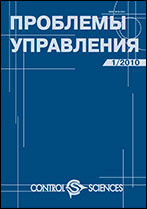|
Administration of engineering systems and technological processes
Creating feature spaces and autoregressive models to forecast railway track deviations
A. Yu. Vladovaab
a Trapeznikov Institute of Control Sciences, Russian Academy of Sciences, Moscow, Russia
b Financial University under the Government of the Russian Federation, Moscow, Russia
Abstract:
Diagnosis of railway tracks reveals the deviations of rail parameters in the plan and profile from their nominal values. If the deviations approach the limit values, the speeds of trains must be reduced. Therefore, forecasting changes in the deviations is a topical problem. Despite the significant amount of diagnostic data collected, railway operators underuse machine learning methods to improve the quality of prediction. The proposed approach differs from known counterparts as follows. First, the dimensionality of the feature space is increased by calculating the variation of the amplitudes of deviations from the nominal values and two types of areas (the deviation length multiplied by the amplitude and the deviation length multiplied by the variation of the amplitude); subsequently, this space is represented in the 3D matrix form. Second, a set of control parameters is formed; it includes the time and space discretization step, the type of seasonal fluctuations, the number of trend change points, etc. Third, the deviations are predicted in groups differing in type and position along the track. Forecasting is based on minimizing the empirical risk criterion. As a result, a family of autoregressive models is obtained for each discretization interval along the length of the railway track.
Keywords:
time series, diagnosis, software package, discrete technological process.
Received: 30.11.2021
Revised: 27.03.2023
Accepted: 13.04.2023
Citation:
A. Yu. Vladova, “Creating feature spaces and autoregressive models to forecast railway track deviations”, Probl. Upr., 2023, no. 2, 54–64; Control Sciences, 2023, no. 2, 46–55
Linking options:
https://www.mathnet.ru/eng/pu1310 https://www.mathnet.ru/eng/pu/v2/p54
|

| Statistics & downloads: |
| Abstract page: | 69 | | Full-text PDF : | 16 | | References: | 15 |
|




 Contact us:
Contact us: Terms of Use
Terms of Use
 Registration to the website
Registration to the website Logotypes
Logotypes








 Citation in format
Citation in format 